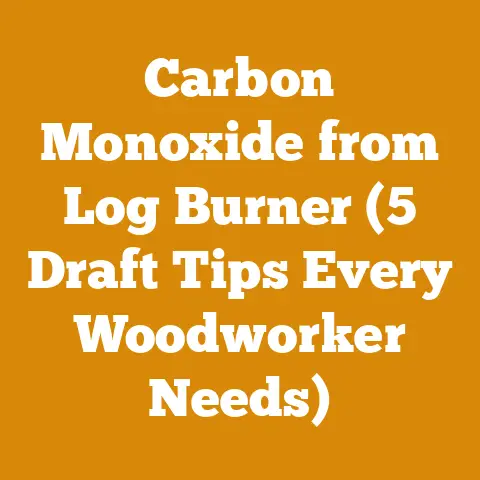Corn for Heating Benefits (5 Pro Tips for Efficient Fuel Use)
Could corn be the unsung hero of your home heating strategy? It might sound unconventional, but burning corn for heat is a practice gaining traction, and for good reason. As someone deeply involved in wood processing, logging, and firewood preparation for over two decades, I’ve seen firsthand how diversifying fuel sources can be a game-changer. I’m going to share with you five pro tips to make corn a viable and efficient heating option.
Corn for Heating: 5 Pro Tips for Efficient Fuel Use
The rising costs of traditional heating fuels like wood, propane, and oil are pushing people to explore alternatives. Corn, readily available in many regions, offers a potentially cheaper and more sustainable option. However, simply throwing some corn kernels into your wood stove isn’t the answer. Efficient corn burning requires understanding the fuel’s properties, adapting your equipment, and employing the right techniques.
1. Understanding Corn as a Fuel Source
Before diving into the specifics, let’s define what we’re talking about. We’re primarily referring to shelled corn kernels – the same kind used for animal feed. While you can burn corn cobs, they have a much lower BTU (British Thermal Unit) output and create more ash, making them less efficient.
Key Concepts:
- BTU: The amount of heat required to raise one pound of water by one degree Fahrenheit. Higher BTU means more heat per unit of fuel. Corn typically has a BTU rating of around 8,000-9,000 BTU per pound, which is comparable to some hardwoods.
- Moisture Content: Just like wood, the moisture content of corn significantly impacts its burn efficiency. Ideally, you want corn with a moisture content of 15% or less. Higher moisture content means more energy is used to evaporate the water, reducing the heat output.
- Ash Content: Corn produces more ash than wood. This means more frequent cleaning of your stove or furnace.
- Feed Corn vs. Sweet Corn: You’ll want to use feed corn, the kind grown for animal consumption. Sweet corn is not suitable for burning due to its higher sugar content, which can lead to creosote buildup.
My Personal Experience:
Early on, I experimented with burning corn cobs in my old wood stove. It was a messy, inefficient process. The cobs burned quickly, produced a lot of smoke, and left a mountain of ash. That’s when I learned the importance of using shelled corn and proper equipment.
2. Choosing the Right Equipment
You can’t just throw corn into any old stove and expect great results. While some wood stoves can handle small amounts of corn mixed with wood, dedicated corn stoves or multi-fuel stoves are the best option.
Types of Stoves:
- Corn Stoves: These are specifically designed to burn corn. They typically have an auger system that automatically feeds the corn into the burn pot, and a forced-air system that provides efficient combustion.
- Multi-Fuel Stoves: These stoves can burn a variety of fuels, including corn, wood pellets, and even some types of seeds. They offer more flexibility but may not be as efficient as dedicated corn stoves when burning corn.
- Wood Stoves (with modifications): Some older wood stoves can be modified to burn corn by adding a grate designed for smaller fuels and adjusting the air intake. However, this is not recommended without expert guidance, as it can be dangerous.
Key Considerations When Choosing a Stove:
- Hopper Size: The hopper is where you store the corn. A larger hopper means you won’t have to refill the stove as often.
- Auger System: The auger feeds the corn into the burn pot. Look for a reliable auger system that is easy to maintain.
- Airflow Control: Proper airflow is crucial for efficient corn burning. The stove should have adjustable air intakes to control the amount of air that reaches the burn pot.
- Ash Removal: Corn produces more ash than wood, so choose a stove with an easy-to-clean ash pan.
Tool Specifications:
- Corn Stove: Look for a BTU output that matches your heating needs. A typical corn stove might range from 30,000 to 60,000 BTU.
- Multi-Fuel Stove: Check the manufacturer’s specifications to ensure it is rated for corn burning.
- Ash Vacuum: A shop vacuum with a heat-resistant hose and filter is essential for cleaning out the ash pan.
Strategic Advantage: Investing in a dedicated corn stove significantly improves efficiency and reduces the risk of malfunctions or safety hazards.
3. Preparing and Storing Your Corn
Just like with firewood, proper preparation and storage are crucial for efficient burning.
Key Steps:
- Sourcing: Buy corn from a reputable supplier. Avoid corn that is moldy or has been treated with pesticides. Local farmers are often the best source.
- Drying: If the corn is not dry enough (above 15% moisture content), you’ll need to dry it. This can be done by spreading the corn out in a thin layer in a dry, well-ventilated area. A grain dryer can also be used.
- Cleaning: Remove any debris, such as stalks, leaves, or dirt. This will help prevent clogs in the auger system and improve burn efficiency.
- Storage: Store the corn in a dry, rodent-proof container. Moisture is your enemy! A metal garbage can with a tight-fitting lid is a good option.
Measurements and Targets:
- Moisture Content Target: 15% or less. Use a moisture meter to check the moisture content.
- Storage Container: Choose a container that is appropriate for the amount of corn you need to store. A 30-gallon metal garbage can will hold approximately 200 pounds of corn.
Case Study:
I once purchased a large batch of corn that I thought was dry enough, but after a few days, I noticed it was starting to mold. I quickly spread the corn out on tarps in my barn and used fans to circulate air. After a week, the moisture content was down to 12%, and I was able to store it safely. This taught me the importance of thoroughly checking and drying corn before storing it.
Strategic Advantage: Proper preparation and storage minimize moisture content, reduce ash production, and prevent equipment malfunctions, leading to more efficient and cost-effective heating.
4. Optimizing the Burning Process
Even with the right equipment and properly prepared corn, you need to fine-tune the burning process for optimal efficiency.
Key Techniques:
- Start-Up: Follow the manufacturer’s instructions for starting your corn stove. Typically, this involves filling the burn pot with corn and igniting it with a propane torch or fire starter.
- Airflow Adjustment: Adjust the airflow to achieve a clean, efficient burn. Too much air will cause the corn to burn too quickly, while too little air will result in incomplete combustion and excessive smoke. Look for a bright, yellow flame with minimal smoke.
- Auger Speed: Adjust the auger speed to match the airflow. The goal is to feed the corn into the burn pot at a rate that maintains a consistent flame.
- Ash Removal: Clean out the ash pan regularly. Corn produces more ash than wood, so you may need to clean it out every day or two.
- Monitoring: Regularly monitor the stove’s performance. Check the flame, smoke, and ash production. Make adjustments as needed.
My Experience:
I initially struggled to find the right airflow settings for my corn stove. I spent hours experimenting with different settings, observing the flame, and monitoring the stove’s temperature. Eventually, I found the sweet spot that produced a clean, efficient burn with minimal smoke.
Technical Details:
- Flame Color: A bright, yellow flame indicates efficient combustion. An orange or red flame indicates incomplete combustion.
- Smoke Color: Minimal smoke is ideal. Black smoke indicates incomplete combustion.
- Stove Temperature: Monitor the stove’s surface temperature to ensure it is within the manufacturer’s recommended range.
Strategic Advantage: Optimizing the burning process maximizes heat output, minimizes smoke and ash production, and extends the lifespan of your equipment.
5. Safety Considerations
Burning corn, like any fuel, requires careful attention to safety.
Key Safety Measures:
- Carbon Monoxide Detectors: Install carbon monoxide detectors in your home, especially near the stove.
- Smoke Detectors: Ensure your smoke detectors are working properly.
- Ventilation: Ensure the stove is properly vented to the outside.
- Clearance: Maintain proper clearance around the stove. Keep flammable materials away from the stove.
- Regular Inspections: Have your stove inspected by a qualified technician at least once a year.
- Proper Storage: Store corn in a dry, rodent-proof container away from flammable materials.
- Educate Yourself: Read the manufacturer’s instructions carefully and understand the risks associated with burning corn.
Personal Story:
I once had a close call when a bird built a nest in my stove’s chimney. The nest blocked the flue, causing carbon monoxide to build up in my home. Thankfully, my carbon monoxide detector alerted me to the problem, and I was able to evacuate my family and call the fire department. This experience underscored the importance of regular inspections and proper ventilation.
Skill Levels Required:
- Basic: Installing carbon monoxide and smoke detectors.
- Intermediate: Cleaning the stove and chimney.
- Advanced: Inspecting the stove for damage or malfunctions.
Strategic Advantage: Prioritizing safety protects your family and property from the risks associated with burning corn.
Conclusion: Is Corn Right for You?
Burning corn for heat can be a viable and efficient option, especially in areas where corn is readily available and affordable. However, it’s not a one-size-fits-all solution. You need to consider the cost of equipment, the availability of corn, and the amount of time and effort you’re willing to invest in preparing and burning the fuel.
Next Steps:
- Assess Your Heating Needs: Determine how much heat you need to generate.
- Research Corn Stoves: Compare different models and features.
- Source Corn: Find a reliable supplier of dry, clean corn.
- Calculate Costs: Compare the cost of burning corn to other heating fuels.
- Prioritize Safety: Install carbon monoxide and smoke detectors.
Ultimately, the decision of whether or not to burn corn for heat is a personal one. By understanding the benefits and challenges, and by following these pro tips, you can make an informed decision and potentially save money on your heating bills. I hope my experiences, insights, and detailed guidance will empower you to explore this alternative fuel source with confidence and safety.






